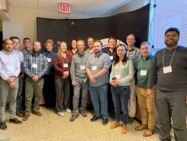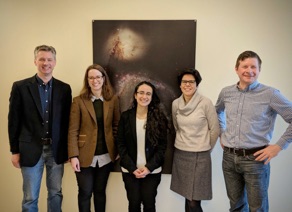

2018 March 29: Liz defends her PhD thesis on dead monsters at cosmic high noon
Liz’s thesis concerns UMPGs - Ultra Massive Passive Galaxies that by redshift ~1.6 have already ceased star formation but not before converting close to a trillion (1011.5) solar masses of gas into stars. These “dead monsters” which are associated with extremely massive and rare dark matter halos (1014 solar masses of dark matter!), reside on the very massive end of the galaxy stellar mass function at these redshifts. Their clustering and high stellar masses suggest that they may be the progenitors of some of today’s central galaxies of massive galaxy clusters such as Coma and Virgo. Despite clearly being associated with massive dark matter halos, they have very few massive companions so any future growth of their mass may only be due to the accretion of low-mass satellites.

2018 August 21: Nathalie defends her MSc thesis on galaxy mergers
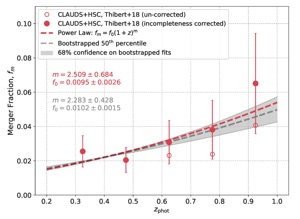

2018 September 1: Angelo joins the team
Angelo George arrives at Saint Mary’s for his MSc studies. He will be working both with me and with Ivana Damjanov. Welcome to SMU, Angelo!

2018 April 10: Ikuru Iwata arrives for a sabbatical stay
Ikuru Iwata, now on leave from his post as Associate Director of the Subaru Telescope, has just arrived in Halifax for a sabbatical visit. Ikuru works in the field of galaxy formation and evolution and is an expert in studying how ionizing photons escape from distant galaxies. These photons are though to be responsible for “reionizing the Universe”, which is a transition that happend at high redshift when intergalactic gas changed from neutral hydrogen to plasma. I look forward to many good interactions with Ikuru and to working with him on constraining the escape rates of ionizing photons from galaxies and quasars in the CLAUDS+HSC data.

2018 May 1: Martin and Harrison join the team
Martin Hellmich and Harrison Souchereau join the SMU galaxy evolution group as summer students. Martin will be working with me to produce realistic simulations of galaxies that will be observed with the planned CASTOR ultraviolet imaging space telescope. Harrison will be working with Ivana and me on measuring the shapes of galaxies in deep images from the Subaru telescope. Welcome to the team, guys!

2018 September 3-7: Dead monsters at cosmic noon visit Sicily

2018 June 5: Thinbaud’s environments paper accepted by MNRAS!
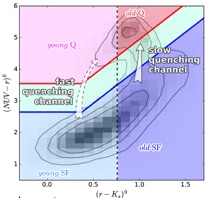

2018 January 19: Paper on the missing mass problem accepted by MNRAS!


2018 September 3-7: New MCAO capability for Gemini and GIRMOS

2018 October 10-12: CLAUDS at Permimeter
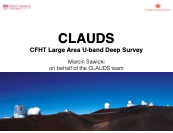

2018 December 4-5: GIRMOS project officially starts!
